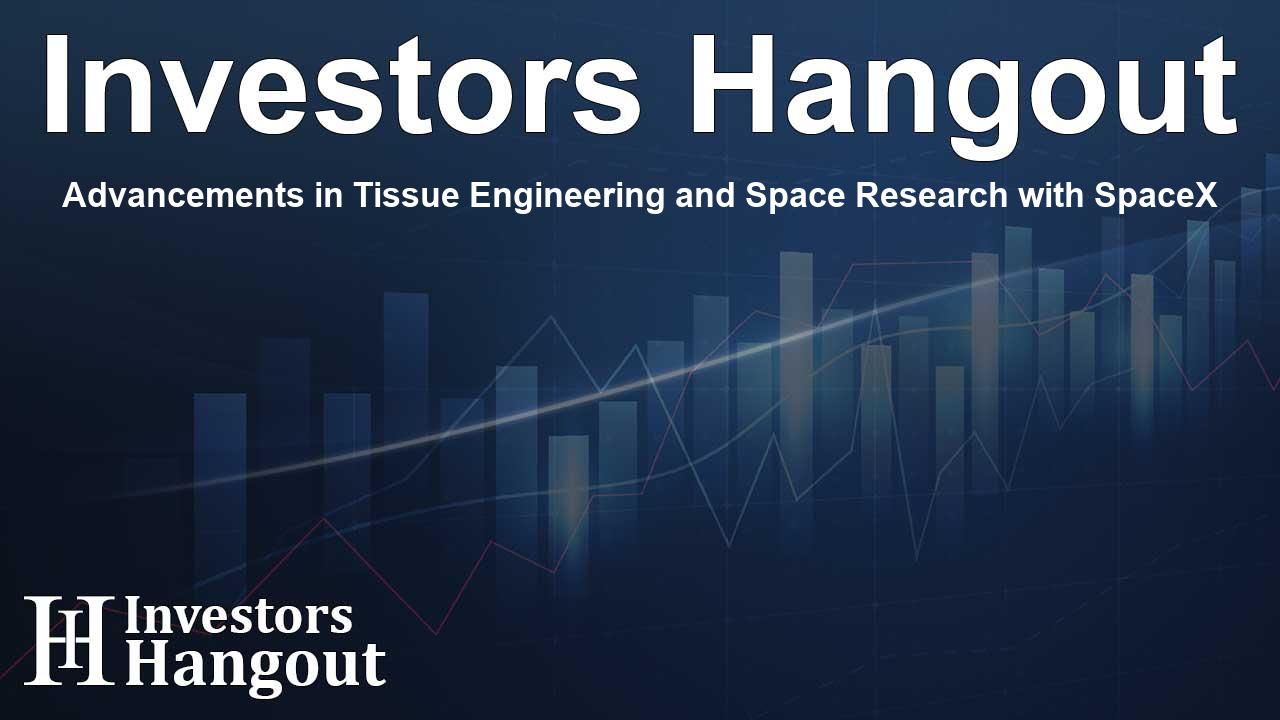Advancements in Tissue Engineering and Space Research with SpaceX

Innovative Research Opportunities with SpaceX's Mission
Exciting advancements in space research are set to take place as part of SpaceX's upcoming mission. This mission will support vital research initiatives aimed at transforming the landscape of science in a variety of fields, including biomedical advancements and technology innovations. The ISS National Laboratory continues to play a crucial role in facilitating projects that have far-reaching benefits for humanity.
Exploring Tissue Engineering in Space
One of the key investigations sponsored by the ISS National Lab involves the Wake Forest Institute for Regenerative Medicine. They are investigating engineered liver tissue that incorporates blood vessels in microgravity conditions. This project stems from NASA's Vascular Tissue Challenge. By examining how tissue behaves in space, this initiative may lead to breakthroughs in space-based tissue engineering, potentially paving the way for future organ replacements.
Understanding Stem Cell Dynamics
Another fascinating area of research will be conducted by Cedars-Sinai Medical Center, focusing on induced pluripotent stem cells, which may divide faster in the unique environment of space. This could have significant implications for regenerative medicine, enabling advancements in therapies for heart disease and neurodegenerative disorders. The findings could also enhance the ability to manufacture stem-cell-based treatments, showcasing the value of microgravity research.
Advancing Computing Technologies in Space
In addition to groundbreaking medical research, the ISS National Lab is collaborating with Axiom Space and Red Hat to explore edge computing technologies aboard the space station. Utilizing the Red Hat Device Edge platform, researchers will validate real-time data processing capabilities that are essential for future research and manufacturing in space. This effort emphasizes the importance of advancements in technology to support ongoing progress in scientific initiatives.
Engaging the Next Generation of Innovators
Many projects led by students are also part of this mission. Initiatives like the annual Genes in Space competition encourage middle and high school students to propose genetics-related investigations in the microgravity environment of the ISS. One of their projects focuses on using bacteriophages as therapy against microbial infections, demonstrating how young minds contribute to future discoveries.
Continuing the Space-Based Research Revolution
The commitment of the ISS National Lab to support such diverse investigations reflects the increasing demand for research and development in space. The ISS serves as a unique platform for innovation, pushing the boundaries of what is possible in science and technology. As these ongoing studies yield valuable insights, they will not only enhance life on Earth but also prepare humanity for the future.
To dive deeper into the research launching with this transformative mission, more information can be found on their official platforms. The ISS National Laboratory's role in connecting researchers with the resources needed to conduct their work in microgravity ensures that the frontier of space exploration continues to benefit all of humanity.
Frequently Asked Questions
What is SpaceX's CRS-33 mission?
The CRS-33 mission is SpaceX's 33rd resupply mission aimed at delivering supplies and conducting important research on the International Space Station.
How does space research benefit people on Earth?
Space research fosters advancements in technology, medicine, and environmental science, which can lead to improved quality of life on our planet.
What types of projects are being conducted in this mission?
Projects include studying tissue engineering, investigating stem cell behavior in space, and validating edge computing technologies.
Who is responsible for managing the ISS National Lab?
The ISS National Lab is managed by the Center for the Advancement of Science in Space (CASIS), which facilitates research initiatives and partnerships.
How can students get involved in space research?
Initiatives like the Genes in Space competition allow students to propose experiments, encouraging youth engagement in STEM fields.
About The Author
Contact Kelly Martin privately here. Or send an email with ATTN: Kelly Martin as the subject to contact@investorshangout.com.
About Investors Hangout
Investors Hangout is a leading online stock forum for financial discussion and learning, offering a wide range of free tools and resources. It draws in traders of all levels, who exchange market knowledge, investigate trading tactics, and keep an eye on industry developments in real time. Featuring financial articles, stock message boards, quotes, charts, company profiles, and live news updates. Through cooperative learning and a wealth of informational resources, it helps users from novices creating their first portfolios to experts honing their techniques. Join Investors Hangout today: https://investorshangout.com/
The content of this article is based on factual, publicly available information and does not represent legal, financial, or investment advice. Investors Hangout does not offer financial advice, and the author is not a licensed financial advisor. Consult a qualified advisor before making any financial or investment decisions based on this article. This article should not be considered advice to purchase, sell, or hold any securities or other investments. If any of the material provided here is inaccurate, please contact us for corrections.
